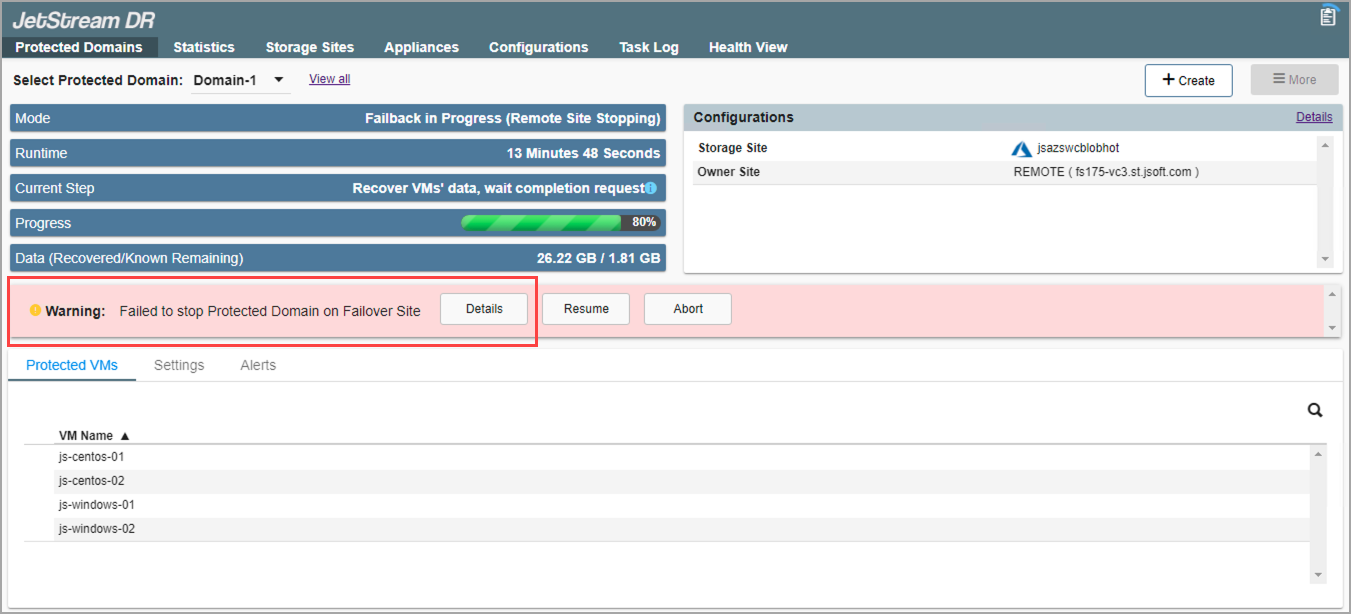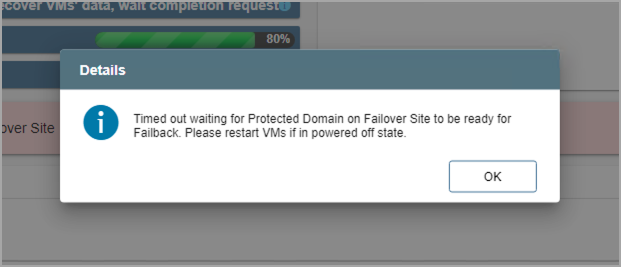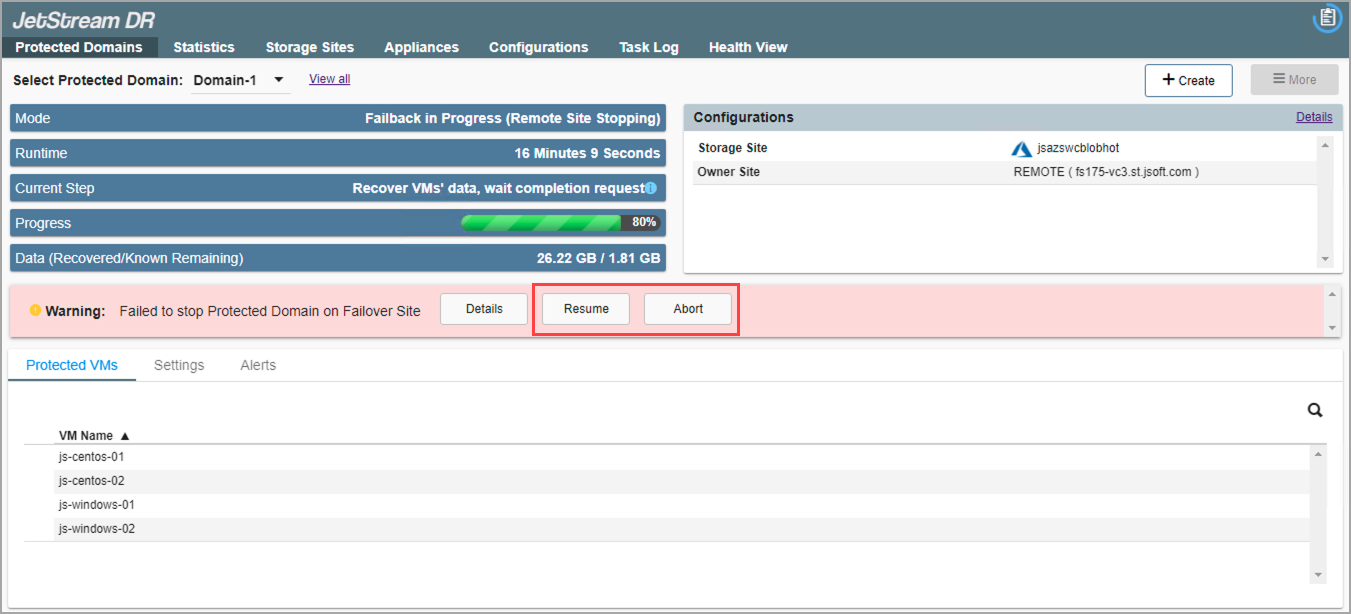Resume a Paused Failback
During the failback process, after a certain amount of data has been recovered from the object store, the management server will determine the optimal moment to complete the recovery process ensuring the job will conclude within the time limit imposed by the Maximum Delay After Stopping value specified by the user. The remote site will be stopped, VMs will be gracefully powered off, garbage collection will be stopped, and the failover DRVA domain will be stopped. However, if any of these automated tasks fail, the management server will pause the failback process prompting the user to manually fix the problem. The failback job can then be resumed from that point onward.
- If a problem is encountered during the automated portion of failback, the failback job will be paused for user intervention.
- A warning message will be displayed.

Failback will pause if an error is encountered.
- Clicking the Details button will open a dialog window describing the nature of the problem.

View details of the error.
- If the problem can be resolved, correct the problem then click the Resume button to continue failback from the point at which it was paused.
- If the problem cannot be resolved immediately, click the Abort button to stop the failback process altogether.
- After the problem has been resolved, restart the entire failback process.

After the problem has been resolved, failback can be resumed or aborted.